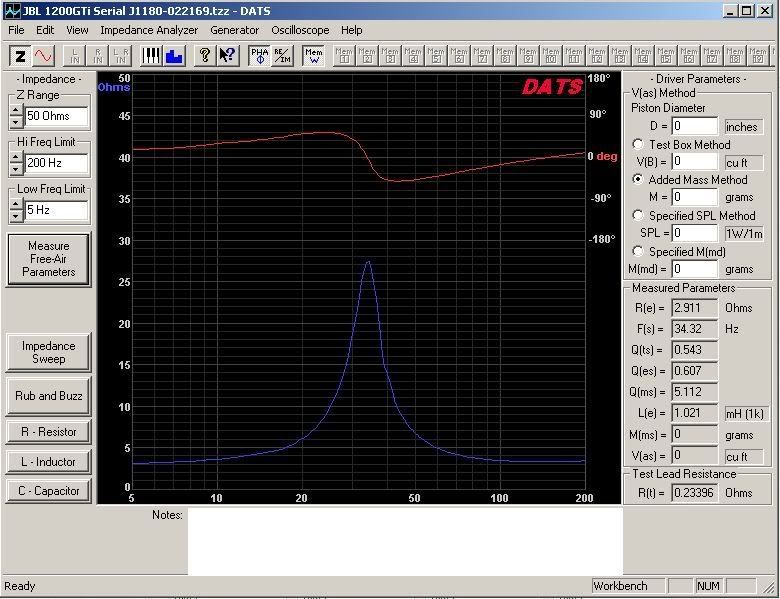I am using software (LIMP) that takes two impedence graphs and figures out t/s parameters. Another user told me it is impossible to get a test box fs, below that of free air fs. My free-air impedence has one peak. My test box impedence has two peaks one below and one above the free air peak. IF I test my speaker using added mass I get very, very close results to that of IF I use the second hump on the closed box impedence.
I do not know why it works, I just know that it does.
I do not know why it works, I just know that it does.
I am using software (LIMP) that takes two impedence graphs and figures out t/s parameters. Another user told me it is impossible to get a test box fs, below that of free air fs. My free-air impedence has one peak. My test box impedence has two peaks one below and one above the free air peak. IF I test my speaker using added mass I get very, very close results to that of IF I use the second hump on the closed box impedence.
I do not know why it works, I just know that it does.
I'll clue you in as to what it is doing. The free-air sweep alone figures out most of the parameters already. Two impedance graphs are not necessary to calculate most T/S parameters; I would know since I've been doing T/S parameters since '93 with basic test gear--no computer or anything.
This is what I mean. See this single impedance sweep? This is all that is needed to figure out all basic T/S parameters, except Vas.

The "second" impedance peak (not shown above) is to shift the free-air resonance (purposely), solely in order to be able to calculate Vas (and other specs dependent on sensitivity, like SPL(1W/1m)). It does not need the second impedance sweep with the shifted resonance to determine basic T/S parameters. It is simply not needed. People (such as myself) have been doing doing T/S parameters (without Vas) using basic test gear for decades like this. Then to extract Vas, the resonance has to be manually shifted downward (by adding mass), or upward (by using test boxes), and then the Vas can be calculated from the shifted resonance, and does not depend on any other T/S parameters nor the rest of the impedance plot what so ever.
That is flat-out weird. THREE impedance peaks in a single impedance plot of a driver in a test box? There has to be something wrong there. Even in a test box, there is only one system resonance, Fc.My test box impedence has two peaks one below and one above the free air peak
Good luck bud, you'll need it with that wacky software/hardware. Dayton DATS is muuuuccchhh easier. 😛
- Status
- Not open for further replies.